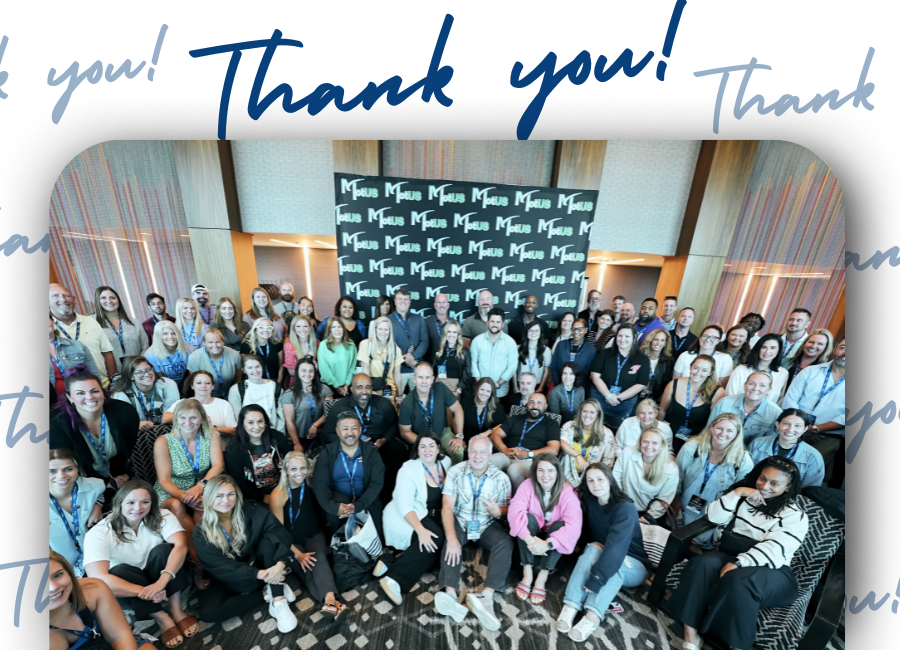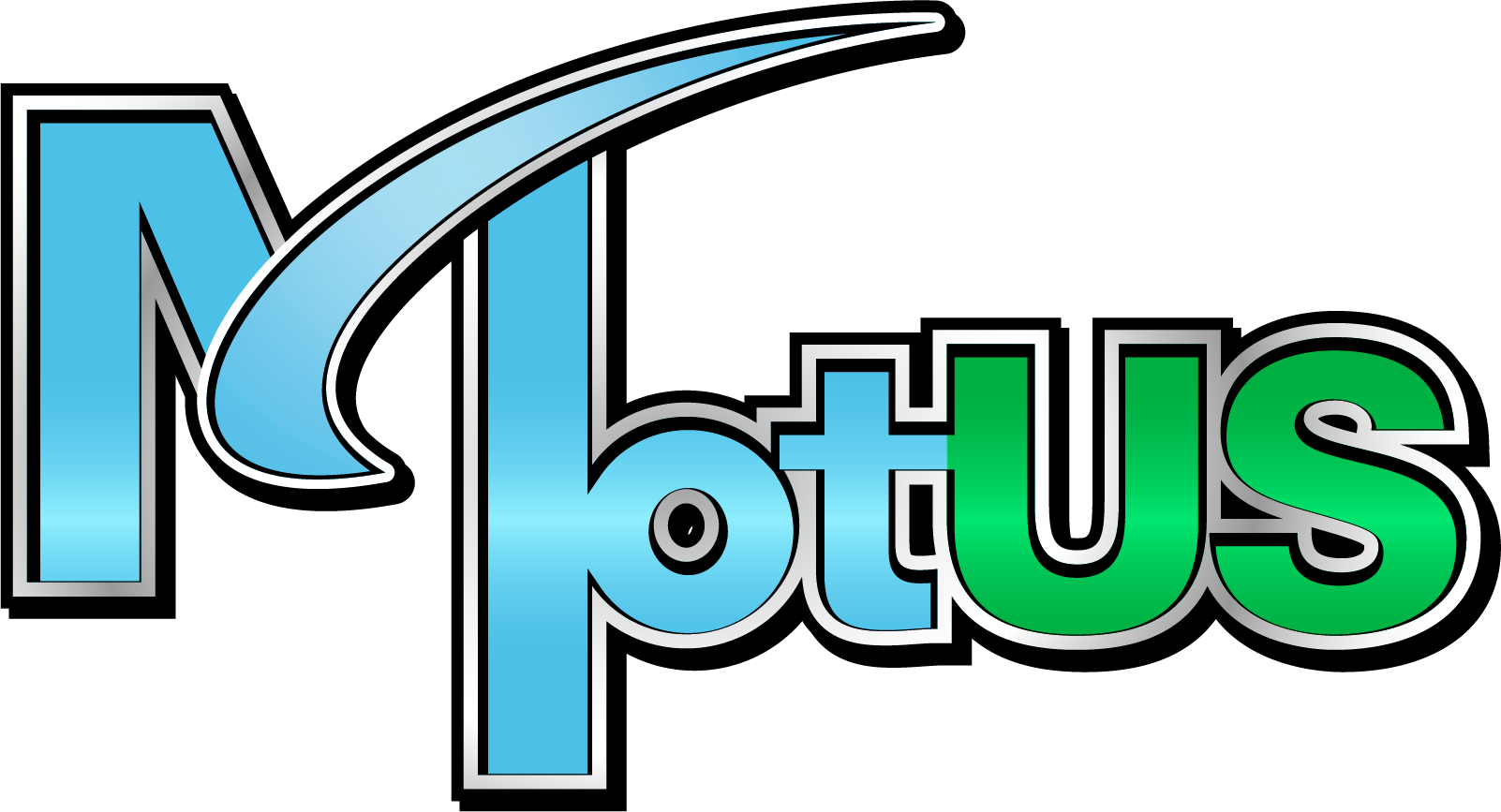Branding Your Cheer Gym: Build a Legacy That Lasts
October 24, 2024

Branding Your Cheer Gym: Build a Legacy That Lasts
By: Lee Laurence
Running a cheerleading gym goes beyond teaching skills and preparing for competitions—it's about creating a lasting experience for your athletes, their families, and the community around you. That’s where branding
plays a big role.
Branding isn’t just a logo or a catchy name. It’s the impression you leave on everyone who interacts with your gym. It’s what makes your gym stand out, even in an industry as energetic and competitive as cheerleading. In cheer, where athletes and parents invest their time and trust, your brand builds loyalty and creates a sense of belonging.
Why Branding Is Key for Your Cheer Gym
When you think of the top cheerleading gyms, what comes to mind? Maybe it’s their competition success, but often it’s how they make their athletes feel. That’s the real power of branding.
For cheer gyms, branding helps you:
- Attract the right athletes and families: A clear brand message helps you communicate what your gym stands for. Whether your focus is on high-level competition or building a positive, inclusive environment, your brand sets the tone before anyone even walks through your doors.
- Build trust and loyalty: Parents and athletes want to feel like they’re part of something special. A strong brand with a clear mission makes them proud to belong to your gym, turning members into loyal advocates.
- Stand out from the competition: With so many cheer gyms around, what makes yours different? Branding is what turns your gym from just another option into the gym that people choose for their athlete’s journey.
Building a Brand That Reflects Your Gym's Values.
Branding isn’t just about colors, fonts, and logos (though those are important). It’s about defining
who you are and what sets you apart. Here’s how you can build a brand that truly speaks to
your cheer community:
- Know Your Story: Every gym has its own unique story. Maybe you started your gym to create a positive, family-like environment for athletes. Or maybe you’re focused on pushing athletes to their competitive best. Whatever your story is, make it the heart of your brand.
- Define Your Values: Are you all about personal development and teamwork? Or is your focus on training elite athletes? Get clear on your gym’s core values and make sure your brand reflects them. These values should be evident in everything you do, from your website to how you engage with families.
- Create a Visual Identity: Your gym’s visual branding—like logos, colors, an uniforms—should tell a story. Is your gym bold and competitive, or more welcoming and nurturing? Choose design elements that reflect your gym’s vibe and energy, and ensure that your branding stays consistent across every platform and interaction.
- Be Consistent in Experience: Your brand is more than just visuals—it’s how you interact with your athletes and families every day. From your welcome emails to social media posts and face-to-face conversations, every touchpoint should reflect your brand’s values and personality. Whether you're promoting a positive, supportive gym culture or a competitive edge, make sure your audience feels it in every interaction.
Branding Is for All Gyms, Big or Small
No matter the size of your gym, branding is key. You don’t need to have national titles under your belt to build a strong brand. What matters most is staying true to your story and being consistent. Your authenticity is what will make your gym stand out and attract the right people.
How MotUS Can Help You Strengthen Your Brand
At MotUS, we understand that building a brand can feel overwhelming. But the good news is—you’re not in this alone. We’ve built a community of gym owners who share ideas and collaborate to create meaningful, impactful brands.
Through the MotUS Vault, you have access to resources that can guide you in developing your gym’s brand, from designing logos to crafting your story. We also offer one-on one consulting to help refine your strategy, ensuring your brand resonates with your target audience.
Whether you’re just starting your gym or looking to refresh your brand, we’re here to help you create something that lasts.
In summary,
branding is essential for creating a cheerleading gym that not only attracts athletes but also builds a lasting legacy. By focusing on your gym’s values, story, and the overall experience you provide, you can build a brand that becomes a symbol of pride and dedication. With the right support from MotUS, you’ll be on your way to building a brand that stands out and stands strong.

Lee Laurence - I’m Lee Laurence, and I work in Digital Media at Assistantly. With five years of experience in social media and digital marketing, I’ve developed a knack for creating engaging and impactful content. Outside of work, I’m a huge fan of old-school cars—they’re a bit of a passion project for me. I love finding ways to combine my love for classic style with modern digital strategies, always looking for creative ways to make my work stand out.

If you’ve ever left a convention center thinking “did I just walk 25 miles and emotionally age 10 years?”—same. In this week’s ModUS Edge, Stacy, Cole, Kevin, and Casey dig into the messy middle of navigating events: coaching highs and lows, talking with judges, handling parents, and keeping your staff culture intact when half the table is ordering celebratory cheesecake and the other half wants a rain check on life. Here’s your 3-minute, friendly, slightly caffeinated guide—peppered with real-world scripts you can steal. The Pressure Cooker Is Real (and Normal) Large events (CheerSport, NCA, CheerExpo Nashville, pick your monster) compress: Months of work → five minutes on the mat 10–15 hour days → 30,000–50,000 steps Pride + fatigue → spicy emotions Coaches come out either floating (“I am a genius!”) or spiraling (“Do I even know how to coach?”). Both are normal. Build a Day-After Protocol so the pendulum doesn’t decide your season. Day-After Protocol (steal this): Feel it (24-hour rule): Celebrate or sulk, but cap it. Frame it : “We trained well, we learned X, we’ll adjust Y.” Focus it : Three fixes for practice #1 back. Forward it : Team message by noon: “Proud of your effort. Here’s our plan.” Dad-joke breath: Which is faster, hot or cold? Hot—you can catch a cold. (…We’ll show ourselves out.) Expectations: Your Emotional Safety Net The difference between devastation and determination is often pre-framing . Newer programs: Define “win” as finals made , zero-deduct routines , or hitting a season-first skill on stage . Established programs: Confidence ≠ cockiness. If “champ or bust” is the only acceptable outcome, you’re one score slip away from a culture crisis. Huddle line you can use: “We play to win and to improve. If we hit our standard, we succeeded. If we also take home metal, that’s dessert.” Talking to Judges & Event Officials (Without Raising Your Blood Pressure) Judges want to get it right. They also don’t live inside your choreography brain. Before you walk up: Circle where they’re right on the sheet. (They usually are on something.) Pick one category to discuss (jumps, stunt difficulty, etc.). Bring a clip if allowed; keep it 2 minutes . Open with this: “Coach from [Gym], Level [X]. Thank you for your notes—especially on [specific]. Could you help me calibrate our [category] vs. the range you were seeing? Here’s a 15-sec clip.” Leave with this: “Got it—so if we [specific tweak], our target range becomes [X]. Appreciate your time.” No monologues. No sarcasm. No “my kids worked too hard” (everyone’s kids did). Parent Dynamics: From Squabbles to Support Squad Fatigue + money + travel = feelings. Set lanes before you load the bus. Pre-event parent note (edit and send): Priority Viewing = cheer zone, not debate stage. Scores & placements discussed by staff only . If emotions spike, text the team number “PAUSE” and we’ll regroup after awards. Your best job today: film smiles, pack snacks, high-five often. At the event: If tempers flare: “I hear you. We’ll review scores and the video and update by [time]. Right now we’ve got kids to coach.” When It Falls Apart in Warm-Up (and It Will Someday) An injury, a popped layout, a last-minute replacement—welcome to coaching. In-the-moment script: To the athlete: “You’re safe, we’ve got you. Breathe. To the team: “We adjust and execute. Count matters more than choreo.” To the score: “Clean > cute.” Strip to the reliable. Later, honor the athlete and the work. You’re building humans, not just routines. Dinner Table Diplomacy One end of the table is planning a victory lap; the other end is googling “new careers.” Seat by project , not placement. Pair a coach who’s flying high with one who needs perspective. Toast process wins (hit rate, upgraded stunt, best coverage) before placements. Feedback Is a Gift (Even When It Feels Like a Cactus) It stings because you care. Make “gift” your team’s reflex. Staff debrief template: 2 things the judges nailed 1 thing we disagree on (and why) 3 changes we’ll try by next practice Bonus tip: Record a 2-minute Loom (or phone video) summary for parents: what the sheet said, what we’re changing, how they can help (sleep, nutrition, mindset). Winning Changes Your Culture—Guard It Sustained winning sneaks in entitlement if you’re not ready. Celebrate standards , not just statuses . (“We hit our expectation for technique,” not “We’re Stingrays, of course we won.”) Rotate credit widely : stunt group of the week, unsung hero, best teammate. Make “Can I get help?” a strength , not a scarlet letter. Quick Event-Day Checklist ☐ Expectation email (athletes & parents) sent 48 hrs prior ☐ Coach roles for warm-up & mat (caller, fix, spot, calm) ☐ Judge plan : 1 category, 2 minutes, 1 ask ☐ Parent captain assigned (snacks, seats, smiles) ☐ Post-day message scheduled (pride + plan) ☐ Day-After Protocol on deck You’ll laugh, you’ll nod, you’ll steal at least two lines. For the full conversation (and more chapstick discourse than anyone expected), dive into the episode: The MotUS Edge Podcast – YouTube: https://www.youtube.com/@themotusedge The MotUS Edge Podcast – Apple: https://podcasts.apple.com/us/podcast/the-motus-edge/id1786597546 The MotUS Edge Podcast – Spotify: https://open.spotify.com/show/63xUjmymxRiXHkSSEjlfOD?si=e5036453706148d9&nd=1&dlsi=02e897fb37a148ce

Let’s face it — “upselling” can sound slimy. Like you're trying to squeeze more dollars from parents. But that’s not how we do things at MotUS — and it shouldn’t be how you run your gym either. Upselling done right is simply helping families say “yes” to more value. It's not about pressure — it’s about partnership. When families win, athletes grow, and your gym becomes stronger. Rethinking the Word "Upsell" Upselling doesn’t mean pushing fluff. It means: Showing families programs they didn’t even know existed. Offering real tools to help athletes progress faster. Recommending opportunities that match a family’s goals. Making their overall gym experience better. Bottom line? Upselling is just another word for serving well Why It Matters for Your Gym When it’s done with heart, upselling: Boosts athlete development: Extra privates, clinics, and specialty classes can fast-track skills. Improves parent satisfaction: Families feel seen and supported when you recommend the right fit. Creates more coaching opportunities: New programs mean more hours, more buy-in, and happier staff. Strengthens your bottom line: Diversified income means you’re less vulnerable during slow seasons. This isn’t just about growth — it’s about sustainability. 5 Natural Moments to Offer More (Without the Ick) Looking for the right time to suggest something extra? Try these: At Registration: Offer class bundles, discounted add-ons, or starter gear packages. After Big Wins: Just landed a new skill? Recommend a private or advanced clinic. Seasonal Hype: Camps, workshops, or themed training are fun and easy yeses. During Parent Chats: Listen for concerns—confidence, conditioning, flexibility—and point them to solutions. In the Pro Shop: Spirit gear and accessories are upsells that build culture and revenue. The goal? Make the next step obvious and helpful. How to Offer More Without Feeling Salesy Here's the MotUS playbook for upselling with integrity: Only Recommend What You Believe In If it’s not truly valuable, don’t pitch it. Start with Questions Ask what families want, then connect the dots. Sell the Outcome, Not the Item Instead of “new class alert,” try: “This class will help your athlete get comp-ready faster.” Give Options, Not Ultimatums Offer choices. Let families feel empowered, not pressured. Train Your Team to Spot the Opportunity Every coach and front desk staffer should know how to guide, not push. When You Upsell with Heart, Here’s What Happens Athletes grow because they get more chances to train. Parents trust you because they feel heard and helped. Your team thrives because they get more buy-in and hours. Your business grows because the model supports long-term stability. From the MotUS Lens At MotUS, we don’t see upselling as “extra.” We see it as essential. It's a mindset shift—from selling to serving. And when you operate from that place, families will feel it. They’ll thank you for it. And your gym will be better because of it. TL;DR: Make the Upsell Easy to Say Yes To ✅ Think: add value, not pressure ✅ Focus on outcomes, not features ✅ Offer choices at natural moments ✅ Always, always lead with service Final Word Upselling doesn’t have to feel gross. In fact, it should feel like exactly what they needed. So next time you offer a class, camp, or product, ask yourself: “Does this help this athlete get more out of their journey?” If the answer is yes, then don’t hesitate to offer it — because that’s not sales. That’s service.

Let’s face it — “upselling” can sound slimy. Like you're trying to squeeze more dollars from parents. But that’s not how we do things at MotUS — and it shouldn’t be how you run your gym either. Upselling done right is simply helping families say “yes” to more value. It's not about pressure — it’s about partnership. When families win, athletes grow, and your gym becomes stronger. Rethinking the Word "Upsell" Upselling doesn’t mean pushing fluff. It means: Showing families programs they didn’t even know existed. Offering real tools to help athletes progress faster. Recommending opportunities that match a family’s goals. Making their overall gym experience better. Bottom line? Upselling is just another word for serving well Why It Matters for Your Gym When it’s done with heart, upselling: Boosts athlete development: Extra privates, clinics, and specialty classes can fast-track skills. Improves parent satisfaction: Families feel seen and supported when you recommend the right fit. Creates more coaching opportunities: New programs mean more hours, more buy-in, and happier staff. Strengthens your bottom line: Diversified income means you’re less vulnerable during slow seasons. This isn’t just about growth — it’s about sustainability. 5 Natural Moments to Offer More (Without the Ick) Looking for the right time to suggest something extra? Try these: At Registration: Offer class bundles, discounted add-ons, or starter gear packages. After Big Wins: Just landed a new skill? Recommend a private or advanced clinic. Seasonal Hype: Camps, workshops, or themed training are fun and easy yeses. During Parent Chats: Listen for concerns—confidence, conditioning, flexibility—and point them to solutions. In the Pro Shop: Spirit gear and accessories are upsells that build culture and revenue. The goal? Make the next step obvious and helpful. How to Offer More Without Feeling Salesy Here's the MotUS playbook for upselling with integrity: Only Recommend What You Believe In If it’s not truly valuable, don’t pitch it. Start with Questions Ask what families want, then connect the dots. Sell the Outcome, Not the Item Instead of “new class alert,” try: “This class will help your athlete get comp-ready faster.” Give Options, Not Ultimatums Offer choices. Let families feel empowered, not pressured. Train Your Team to Spot the Opportunity Every coach and front desk staffer should know how to guide, not push. When You Upsell with Heart, Here’s What Happens Athletes grow because they get more chances to train. Parents trust you because they feel heard and helped. Your team thrives because they get more buy-in and hours. Your business grows because the model supports long-term stability. From the MotUS Lens At MotUS, we don’t see upselling as “extra.” We see it as essential. It's a mindset shift—from selling to serving. And when you operate from that place, families will feel it. They’ll thank you for it. And your gym will be better because of it. TL;DR: Make the Upsell Easy to Say Yes To ✅ Think: add value, not pressure ✅ Focus on outcomes, not features ✅ Offer choices at natural moments ✅ Always, always lead with service Final Word Upselling doesn’t have to feel gross. In fact, it should feel like exactly what they needed. So next time you offer a class, camp, or product, ask yourself: “Does this help this athlete get more out of their journey?” If the answer is yes, then don’t hesitate to offer it — because that’s not sales. That’s service.

When you started your gym, it probably wasn’t just about trophies or tuition. You had a why — a purpose rooted in impact, growth, and creating a place where athletes could thrive. But let’s be honest — leadership gets heavy. Budgets. Burnout. Difficult parents. Staff challenges. The longer you’re in it, the easier it is to drift from your “why” and into survival mode. This is your reminder: leadership isn’t just about making it work — it’s about making it matter. The cheer gym leaders who create the biggest change are the ones who lead with heart What Leading with Heart Really Means Leading from the heart doesn’t mean being soft. It means being strong enough to care deeply. It looks like: Putting people over policies Leading with compassion — not control Seeing athletes and staff as full humans, not just roles Holding high standards, while offering understanding Leading with authenticity, not ego It’s not just about managing a program. It’s about inspiring one. Why Empathy Wins in the Cheer Industry Cheer isn’t like other industries. Our people are different — and so are their needs. Athletes are still growing. They need role models, not just instructors. Parents are deeply invested. They want to know their child is seen and supported. Coaches wear a thousand hats. They need more than instructions — they need belief. Empathetic leadership builds safety, trust, and motivation — which directly impacts loyalty, retention, and performance. Managing vs. Leading: Know the Difference Managing says: “Do this because it’s the rule.” Leading says: “Let’s do this because it aligns with who we are.” The difference? One controls behavior. The other inspires commitment. Gyms that manage get compliance. Gyms that lead build culture. 5 Ways to Lead from the Heart (Starting Now) Listen First Be the leader who asks questions and really hears the answers. Be Human Vulnerability isn’t weakness — it’s connection. Share your challenges, too. Hold Standards + Show Grace You can coach hard and still lead gently. Accountability lands better with compassion. Celebrate People, Not Just Performances Recognize kindness, effort, and growth — not just 1st place wins. Model the Values You Expect How you speak, respond, and lead sets the tone for your entire gym. The Legacy of Leading with Heart When you lead with empathy and intention: Athletes grow in confidence and character Parents believe in your leadership beyond the mat Staff find purpose and stick around Your values echo throughout your entire community This is how you build a gym people talk about for years — not just a season. The MotUS Lens At MotUS, we know the cheer industry doesn’t need more policies — it needs more people-first leaders . The gyms that last — the ones that retain, grow, and stand out — are the ones built on care, connection, and courageous leadership. You don’t need to lead louder. You just need to lead real. Key Moves to Make: Lead with Heart, Lead for Impact True leadership starts with empathy — not authority Show up human. Your people don’t expect perfection — they expect presence Leading from the heart inspires deeper loyalty, trust, and resilience You’re not just building teams. You’re building people Lead with intention, and your impact will outlast every season Final Word In the world of cheer, you don’t lead to be followed — you lead to serve . So serve well. Lead with heart. And build a gym where every athlete, coach, and parent feels seen, heard, and valued. Because the best leaders in this industry? They aren’t the toughest. They’re the ones who care the most.

When you started your gym, it probably wasn’t just about trophies or tuition. You had a why — a purpose rooted in impact, growth, and creating a place where athletes could thrive. But let’s be honest — leadership gets heavy. Budgets. Burnout. Difficult parents. Staff challenges. The longer you’re in it, the easier it is to drift from your “why” and into survival mode. This is your reminder: leadership isn’t just about making it work — it’s about making it matter. The cheer gym leaders who create the biggest change are the ones who lead with heart What Leading with Heart Really Means Leading from the heart doesn’t mean being soft. It means being strong enough to care deeply. It looks like: Putting people over policies Leading with compassion — not control Seeing athletes and staff as full humans, not just roles Holding high standards, while offering understanding Leading with authenticity, not ego It’s not just about managing a program. It’s about inspiring one. Why Empathy Wins in the Cheer Industry Cheer isn’t like other industries. Our people are different — and so are their needs. Athletes are still growing. They need role models, not just instructors. Parents are deeply invested. They want to know their child is seen and supported. Coaches wear a thousand hats. They need more than instructions — they need belief. Empathetic leadership builds safety, trust, and motivation — which directly impacts loyalty, retention, and performance. Managing vs. Leading: Know the Difference Managing says: “Do this because it’s the rule.” Leading says: “Let’s do this because it aligns with who we are.” The difference? One controls behavior. The other inspires commitment. Gyms that manage get compliance. Gyms that lead build culture. 5 Ways to Lead from the Heart (Starting Now) Listen First Be the leader who asks questions and really hears the answers. Be Human Vulnerability isn’t weakness — it’s connection. Share your challenges, too. Hold Standards + Show Grace You can coach hard and still lead gently. Accountability lands better with compassion. Celebrate People, Not Just Performances Recognize kindness, effort, and growth — not just 1st place wins. Model the Values You Expect How you speak, respond, and lead sets the tone for your entire gym. The Legacy of Leading with Heart When you lead with empathy and intention: Athletes grow in confidence and character Parents believe in your leadership beyond the mat Staff find purpose and stick around Your values echo throughout your entire community This is how you build a gym people talk about for years — not just a season. The MotUS Lens At MotUS, we know the cheer industry doesn’t need more policies — it needs more people-first leaders . The gyms that last — the ones that retain, grow, and stand out — are the ones built on care, connection, and courageous leadership. You don’t need to lead louder. You just need to lead real. Key Moves to Make: Lead with Heart, Lead for Impact True leadership starts with empathy — not authority Show up human. Your people don’t expect perfection — they expect presence Leading from the heart inspires deeper loyalty, trust, and resilience You’re not just building teams. You’re building people Lead with intention, and your impact will outlast every season Final Word In the world of cheer, you don’t lead to be followed — you lead to serve . So serve well. Lead with heart. And build a gym where every athlete, coach, and parent feels seen, heard, and valued. Because the best leaders in this industry? They aren’t the toughest. They’re the ones who care the most.

If you’ve ever stared at an empty sub list the night before comp and thought, “I wish I could clone a few of our best parents,” this one’s for you. In this Quick Edge episode, Stacy & Casey go full morning-radio energy (someone call 99.8 FM) to unpack the surprisingly great upside of hiring parents—plus the non-negotiable boundaries that keep it healthy for the team, the staff, and their kids. Why hiring parents can be a win Parents are already invested. They show up, they care, and they understand your gym’s rhythm better than most new hires. When you hire the right ones, you get: Built-in buy-in: They want the program to thrive because their kid is in it. Culture carriers: They know “how we do things here” and can model it for new families. Community glue: They bridge staff and stands, translating decisions into plain English when emotions run high. What Makes a Team Bonding Activity Work Not all team bonding is effective — or fun. Use these filters to make sure your activities land: Make it Fun: If it’s forced or boring, it backfires. Keep energy high. Keep it Inclusive: Make sure every athlete, regardless of role or personality, can participate. Spark Communication: Look for games that require athletes to talk, listen, and collaborate. Connect to Cheer: Bonus points if the activity mirrors teamwork, timing, or trust. Switch It Up: Use a mix of physical, creative, and reflective challenges to keep it fresh. But you need bright, bold boundary lines Enthusiasm without structure turns messy fast. Before any parent clocks in, cover these: 1) Role clarity: Are they front desk? Team admin? Assistant coach? Spell out tasks, hours, who they report to, and where their authority starts/ends. 2) Travel & perks: Parents-who-coach still have kids-who-travel. Decide (in writing) what’s covered: Room stipend or shared room? Is their athlete’s travel ever comped? (Usually no; if sometimes, define when/how.) If a parent’s team performs during their child’s routine, team duty wins . No surprises later. 3) Confidentiality (zero tolerance): If they can see billing or rosters, they can never discuss another family’s info. Treat it like HIPAA for tuition. One breach = loss of role. 4) Communication channels: Parent-friends will text them about team placements, stunt groups, center spots… all the things. Give your parent-employee a script: “Thanks for reaching out—please email the program inbox so leadership can help. I can’t address team decisions via text.” Then require a quick FYI to leadership so you’re never blindsided. 5) Social boundaries: Friendly? Yes. Entangled? No. Skip the late-night room hangs, bar meetups, and bestie group chats with athletes’ parents. Professional distance protects everyone—including them. The spiciest question: should a parent coach their own child? Rare exceptions aside, the consensus here: avoid it. Even great coaches slide into one of two traps: Too soft: Perceived favoritism nukes team culture. Too hard: Over-correcting to “prove” fairness hurts the athlete and morale. If you can’t avoid it (small market, limited staff), put guardrails in place: another coach makes playing-time/role decisions, a third party handles team placements, and the HC-parent recuses themselves from disciplinary calls involving their kid. Hidden gotchas (and easy fixes) Schedule collisions: Their team performs while their kid competes next hall over. Decide now: the coach stays with the team; another trusted adult films the child’s routine and escorts them. Clear. Calm. No guilt. Parent DMs at 10:42 p.m.: Build a “cooling off” policy—no placement or score discussions until noon the next day, via official inbox only. “But we’re small—we can’t afford stipends.” Totally fine. Pay fairly for work performed , not parent status. If budgets are tight, be transparent: “We can offer X hourly and Y staff discount, but no travel coverage this season.” Mini policy swipe-file (steal this!) Confidentiality: “Access to customer accounts is for job duties only. Sharing any details—financial, roster, or travel—outside the office is grounds for immediate removal.” Dual-hat rule: “If you’re contacting staff about your child, state ‘Parent Hat On’ and use the parent support inbox. Coaching chats never include your athlete’s situation.” Game day priority: “If your coaching assignment conflicts with your child’s performance, team duty takes precedence. We’ll coordinate an approved chaperone/video for your athlete.” Social lines: “No alcohol with parents/athletes at events, no private rooms/hotel hangouts, and no team decisions via text/DM.” Culture is the multiplier Hiring parents works best when the gym’s culture is explicit : how we treat kids, how we speak to refs/judges, how we handle loss, how we celebrate wins. As Casey put it, you want parent-staff who calm the water, not churn it—people who can say, “I know the process; here’s why it’s fair,” and mean it. The bottom line Parents can be your best hires if you give them firmer rails than any other role. Define expectations, protect privacy, draw social lines, and keep communications centralized. Do that, and you’ll gain committed, culture-aligned adults who make your program stronger on and off the mat. Also, yes, we’re now accepting fan mail for the Stacy & Casey Morning Show . First segment: “Where do baby cats learn to swim?” (Answer: the kiddie pool. We’ll see ourselves out. 😅) Catch the full episode here: The MotUS Edge Podcast – YouTube: https://www.youtube.com/@themotusedge The MotUS Edge Podcast – Apple: https://podcasts.apple.com/us/podcast/the-motus-edge/id1786597546 The MotUS Edge Podcast – Spotify: https://open.spotify.com/show/63xUjmymxRiXHkSSEjlfOD?si=e5036453706148d9&nd=1&dlsi=02e897fb37a148ce

Cheerleading is more than routines, skills, and schedules — it’s about trust . Every flyer, base, and backspot relies on each other. And while technical training happens on the mat, real connection is built beyond it. Teams that bond off the floor perform stronger, recover faster, and stay committed longer. That’s where intentional team bonding becomes your secret weapon — not just for fun, but for building a gym culture that sticks. Why Team Bonding Builds More Than Chemistry A great cheer team isn’t just talented — it’s connected. Here’s what intentional bonding can unlock: Trust and Safety: Stunting success starts with trust. Off-the-mat connection builds safer athletes. Stronger Communication: Teams that know each other well communicate better under pressure. More Resilience: When mistakes happen, bonded teams recover instead of unravel. Higher Commitment: Athletes stick with the program when they feel they belong. Stronger Culture: Bonding activities reinforce the values that make your gym a great place to be. What Makes a Team Bonding Activity Work Not all team bonding is effective — or fun. Use these filters to make sure your activities land: Make it Fun: If it’s forced or boring, it backfires. Keep energy high. Keep it Inclusive: Make sure every athlete, regardless of role or personality, can participate. Spark Communication: Look for games that require athletes to talk, listen, and collaborate. Connect to Cheer: Bonus points if the activity mirrors teamwork, timing, or trust. Switch It Up: Use a mix of physical, creative, and reflective challenges to keep it fresh. Team Bonding Games That Build Connection Here are some favorite go-to’s for building trust and fun in the gym: Human Knot A classic. Athletes grab two different hands across a circle and work together to untangle. It’s messy, loud, and full of laughs — but also teaches patience and problem-solving. Trust Circle One athlete stands in the center of a tight circle and falls in any direction. The team gently catches and pushes them back. Builds literal and emotional trust. Cheer Scavenger Hunt Create a list like: “Make up a team chant,” “Snap a pyramid selfie,” or “Find something that represents teamwork.” Great for creativity, movement, and team bonding. Obstacle Course Relay Set up relay challenges with fun, cheer-related tasks — from balance challenges to holding a stunt for time. Builds teamwork under pressure. Two Truths and a Cheer Memory Each athlete shares two truths and one favorite cheer moment. The team guesses the memory. Simple, powerful way to connect beyond skills. Leadership Rotation Let athletes take turns leading a warm-up, drill, or game. Builds confidence and shows everyone’s role matters. When to Use Bonding Games for Maximum Impact Bonding shouldn’t be a one-off — it should be built into your gym’s rhythm: Season Kickoff: Set the tone for unity and trust from day one. Mid-Season Reset: Boost morale during long stretches of practice. Pre-Competition: Short bonding games can calm nerves and strengthen team focus. Celebrations & Events: Add meaning to parties, banquets, or big milestones. The Ripple Effect of Team Bonding When you build team chemistry intentionally, the results go beyond the mat: Parents notice. They see friendships forming and feel more connected to your community. Staff thrive. Coaching bonded athletes is more rewarding and more effective. Retention rises. Athletes stay where they feel supported — not just coached. Your gym reputation grows. Word spreads that your gym is where athletes grow and belong. What MotUS Believes At MotUS, we believe that a connected team is an unstoppable team. Bonding isn’t fluff — it’s a foundation. When athletes feel seen, heard, and included, they train harder, support each other more, and stay longer. You’re not just building teams. You’re building trust, character, and lifelong community Key Moves to Make: Build Teams That Feel Like Family Great teams are built off the mat, not just on it Strong bonds improve safety, resilience, and performance Use bonding games that are fun, inclusive, and cheer-connected Make bonding a regular rhythm — not a one-time event When athletes feel like family, everything changes Final Word Athletes may join your gym for the skills — but they stay for the connection. Team bonding is how you transform individuals into teammates, and teammates into a family. When athletes feel like they truly belong, they don’t just perform — they thrive.

You coach athletes every day — pushing them, guiding them, helping them grow. But here’s the truth most gym owners never hear: you need a coach too. Running a cheer gym isn’t just about the sport. It’s about people, pressure, leadership, and running a business — all at once. And trying to navigate that alone can leave you feeling stuck, scattered, or straight-up burnt out. That’s where mentorship changes everything. Why Mentorship Is a Game-Changer Even the best athletes have coaches. Why? Because support accelerates success. The same is true for gym owners. Mentorship helps you: Gain clarity when you're overwhelmed with decisions Avoid costly mistakes that others have already learned the hard way Grow with confidence instead of second-guessing every move Stay accountable to the goals you keep putting off Feel less alone in an industry that can often feel isolating Mentorship isn’t a luxury — it’s a leadership tool From Megaphones to Music: The Evolution Justin Witnessed If any of these hit close to home, it’s time to seek guidance: You’re constantly busy but not making real progress You’re unsure how to grow without burning out You’ve hit a revenue plateau and don’t know how to scale Your staff feels disconnected or unmotivated You’re juggling 50 roles and losing the joy you once had Sound familiar? You’re not failing — you’re just trying to do it alone What a Great Mentor Can Help You With Whether it’s a seasoned gym owner, a business coach, or a leadership program, the right mentor helps you: Set better systems so your business runs smoother Build a strong team without micromanaging Increase revenue with smarter, more strategic decisions Hold boundaries and protect your time and energy Lead with confidence — not fear or guilt In short, a mentor helps you become the leader your gym needs. How to Find the Right Mentor or Coach Here’s what to look for: They’ve been where you are. Lived experience matters more than theory. They listen before giving advice. You want guidance tailored to your goals. They align with your values. Business success shouldn’t come at the expense of culture. They challenge you. Growth doesn’t happen in your comfort zone. They support you . Not just your gym, but your journey as a leader What Happens When You’re Coached Well Success, in Justin’s words, is "any forward momentum that gets you closer to your purpose." Whether he’s building events, writing curriculum, or helping run NCA Nationals, he sees progress not as perfect outcomes, but as growth in motion. “The end goal keeps changing. But each season gets us somewhere better.” The Cheer Industry Through His Eyes You feel clear. Focused. Supported. Your team starts to reflect your vision. Your systems stop falling apart. Your numbers make sense. Your stress lowers. Your energy returns. And your gym starts growing in ways that feel right — not forced. This isn’t magic. It’s mentorship. The MotUS Lens At MotUS, we don’t just believe in coaching — we live it. Every great leader needs someone in their corner. Someone who challenges your thinking, supports your growth, and keeps you aligned with your purpose. Whether it’s through the MotUS network, our resources, or trusted partnerships — we’re here to remind you: You don’t have to lead alone. Key Moves to Make: Grow with Guidance, Not Guesswork Great coaches have coaches — mentorship is a sign of strength, not weakness You’ll grow faster, lead better, and feel less overwhelmed with the right support Don’t wait for burnout to seek guidance Choose mentors who align with your values and challenge your thinking Leadership is lonely — but it doesn’t have to be Final Word You were never meant to figure it all out on your own. Your athletes get better because they have you. And you get better when you have someone, too . Mentorship isn’t a sign that you’re struggling — it’s a sign that you’re serious about growing. Because the best leaders don’t go it alone. They grow with a coach by their side.

There’s something powerful about being in the right room. Not just a room full of people—but a room full of people who get it. People who’ve walked the late nights, the team drama, the budget stretch, the burnout. People who’ve figured out something you haven’t yet—and are willing to share it. That’s exactly what happened at the 2025 MotUS Business Expo in Nashville. And to everyone who showed up? You felt it A Weekend We Won’t Forget From the rooftop kickoff Sunday night to the red carpet book launch, from laughter-filled round tables to soul-shaking sessions—this wasn’t just a conference. It was a reset. A reminder. A reignition of why we started in the first place. We watched gym owners walk in carrying the weight of leadership—and leave carrying new friendships, fresh ideas, and real momentum. The Real Takeaways (That You Can’t Get on Zoom) Sure, the sessions were powerful: Aaron Flaker reminded us of the deep why behind everything we do. Austin Bayles and Kari Pickering gave us blueprints for branding and systems. Justin Carrier challenged us to build legendary culture, not just successful businesses. Sierra Garvin poured into our hearts with servant leadership. The Round Tables got hilariously real about air fresheners, team reveals, and what MotUS can do better. But the real magic? It happened in the margins. Over coffee. On lunch walks. During late-night talks where vulnerability met strategy. That’s the power of proximity. Why All-Star Style Looks the Way It Does Many say James Speed helped define the performance-forward, fast-paced, skill-packed style we now call All-Star. But it wasn’t about flash—it was about function. He didn’t have enough athletes who could do it all. So he built routines in compartments: Tumblers tumbled. Stunters stunned. Dancers danced. And with that shift, he ushered in a category-based mindset that still shapes choreography today. You show what you’re good at. You hide what you’re not.” Sound familiar? That’s All-Star. Why It Matters You can read all the books. You can watch webinars. You can follow social media accounts that give tips and tools. But nothing compares to being in a room where people aren’t just cheering for your success—they’re handing you the map to get there. Your environment either expands you or limits you. And this room? It was electric with possibility. Mark Your Calendar for 2026 If you missed it this year, you don’t have to miss out again. The MotUS Business Expo returns to Nashville September 27–29, 2026. And trust us—we’re going even bigger. More impact. More innovation. More connections that will change your business and your life. Put it in your calendar. Set the reminder. Start the budget line. Because getting in the right room might be the most important decision you make next year. See you in 2026. Same city. Bigger vision. Because who you learn from—and grow with—matters more than ever. ---- Experience the magic of All Star Cheer like never before! From dazzling red carpet arrivals to the powerful presentation of The Pioneers of All Star Cheer, this unforgettable event celebrated the legends, leaders, and trailblazers who shaped our industry. The evening closed with an exclusive moment from the author, sharing the stories and spirit behind the book that honors the past, present, and future of this incredible sport. Relive the night now on YouTube : @themotusedge https://www.youtube.com/watch?v=Alv9rJ46P4o

There’s something powerful about being in the right room. Not just a room full of people—but a room full of people who get it. People who’ve walked the late nights, the team drama, the budget stretch, the burnout. People who’ve figured out something you haven’t yet—and are willing to share it. That’s exactly what happened at the 2025 MotUS Business Expo in Nashville. And to everyone who showed up? You felt it A Weekend We Won’t Forget From the rooftop kickoff Sunday night to the red carpet book launch, from laughter-filled round tables to soul-shaking sessions—this wasn’t just a conference. It was a reset. A reminder. A reignition of why we started in the first place. We watched gym owners walk in carrying the weight of leadership—and leave carrying new friendships, fresh ideas, and real momentum. The Real Takeaways (That You Can’t Get on Zoom) Sure, the sessions were powerful: Aaron Flaker reminded us of the deep why behind everything we do. Austin Bayles and Kari Pickering gave us blueprints for branding and systems. Justin Carrier challenged us to build legendary culture, not just successful businesses. Sierra Garvin poured into our hearts with servant leadership. The Round Tables got hilariously real about air fresheners, team reveals, and what MotUS can do better. But the real magic? It happened in the margins. Over coffee. On lunch walks. During late-night talks where vulnerability met strategy. That’s the power of proximity. Why All-Star Style Looks the Way It Does Many say James Speed helped define the performance-forward, fast-paced, skill-packed style we now call All-Star. But it wasn’t about flash—it was about function. He didn’t have enough athletes who could do it all. So he built routines in compartments: Tumblers tumbled. Stunters stunned. Dancers danced. And with that shift, he ushered in a category-based mindset that still shapes choreography today. You show what you’re good at. You hide what you’re not.” Sound familiar? That’s All-Star. Why It Matters You can read all the books. You can watch webinars. You can follow social media accounts that give tips and tools. But nothing compares to being in a room where people aren’t just cheering for your success—they’re handing you the map to get there. Your environment either expands you or limits you. And this room? It was electric with possibility. Mark Your Calendar for 2026 If you missed it this year, you don’t have to miss out again. The MotUS Business Expo returns to Nashville September 27–29, 2026. And trust us—we’re going even bigger. More impact. More innovation. More connections that will change your business and your life. Put it in your calendar. Set the reminder. Start the budget line. Because getting in the right room might be the most important decision you make next year. See you in 2026. Same city. Bigger vision. Because who you learn from—and grow with—matters more than ever. ---- Experience the magic of All Star Cheer like never before! From dazzling red carpet arrivals to the powerful presentation of The Pioneers of All Star Cheer, this unforgettable event celebrated the legends, leaders, and trailblazers who shaped our industry. The evening closed with an exclusive moment from the author, sharing the stories and spirit behind the book that honors the past, present, and future of this incredible sport. Relive the night now on YouTube : @themotusedge https://www.youtube.com/watch?v=Alv9rJ46P4o

